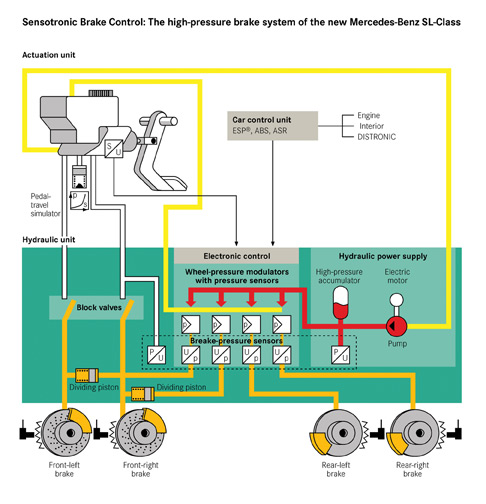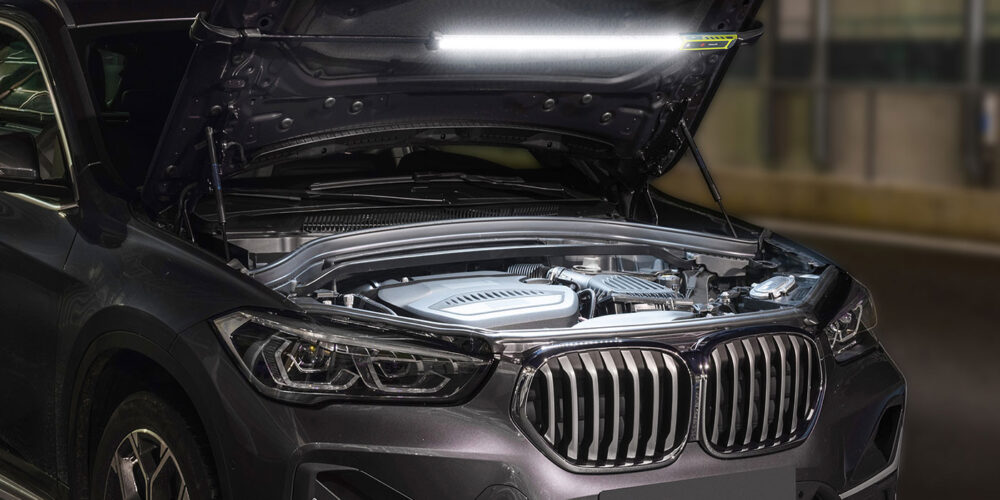
The Sensotronic system remains active for up to two minutes after the ignition has been turned off and the vehicle has remained stationary without touching the brake pedal. Touch the brake pedal, and the system will remain active another four minutes. If you use the keyless entry system to lock the doors, the Sensotronic system times out after 30 seconds. This is important to know, because if you are working on the brakes and the system is activated, the brakes will apply themselves if anybody moves the brake pedal.
To deactivate the system, remove the keyless entry fob from the vehicle, and then lock the doors. Move the key out of range from the vehicle so the system cannot be accidentally activated. After 30 seconds, the Sensotronic system should time out and go into sleep mode. Do not unlock the vehicle while any brake work is being performed and do not touch the brake pedal. Once the work has been completed, the system needs to be reactivated using the following procedure:
1. Turn on the ignition.
2. Turn off the ignition, wait five seconds and then turn it back on.
3. With wheels off the ground, rotate the left rear wheel in the forward direction two revolutions within three seconds, and then stop.
4. Rotate the left front wheel two revolutions in the forward direction within 60 seconds after completing step 3.
The Sensotronic system will then automatically apply the brakes, and flash the brake lights three times to signal it has been reactivated. It will then do a quick self-check and apply the front and rear brakes several times in quick succession. After 50 seconds, the braking will stop.
5. Turn off the ignition, then lower the vehicle to the ground.
6. Start the engine and press the brake pedal five to 10 times. If any faults are found, you will get a fault message on the driver’s display. Repeating the activation procedure may be necessary to clear the fault. But if the fault message remains, you’ll have to hook up a scan tool to read the codes to find out what’s wrong.
There are a couple of ways to bleed the brakes on this system, both of which require a pressure bleeder. With the scan tool method (which requires the factory STAR scan tool or an aftermarket scan tool with similar software), just follow the menu prompts to bleed the system.
The other method is to use the pressure bleeder to bleed the front brakes (left front, then right front) after deactivating the Sensotronic system. To bleed the rear lines, the system is reactivated using the procedure described earlier. Pressure generated by the ABS pump can then be used to bleed the right rear brake circuit. The pump will kick in about 40 seconds after the brake lights stop flashing. You then have about 40 seconds to open the bleeder screw, and 150 seconds to finish bleeding the line.
If you wait too long to open the bleeder screw, the bleed routine will stop and you’ll have to start over by deactivating, then reactivating, the Sensotronic system again. After you finish with the right rear brake, repeat the same procedure to bleed the left rear brake circuit.
Note: Air in the system can cause a squeaking noise when the brakes are lightly applied, so the factory STAR scan tool has a special “air release” routine that takes about 10 to 15 minutes to complete.








